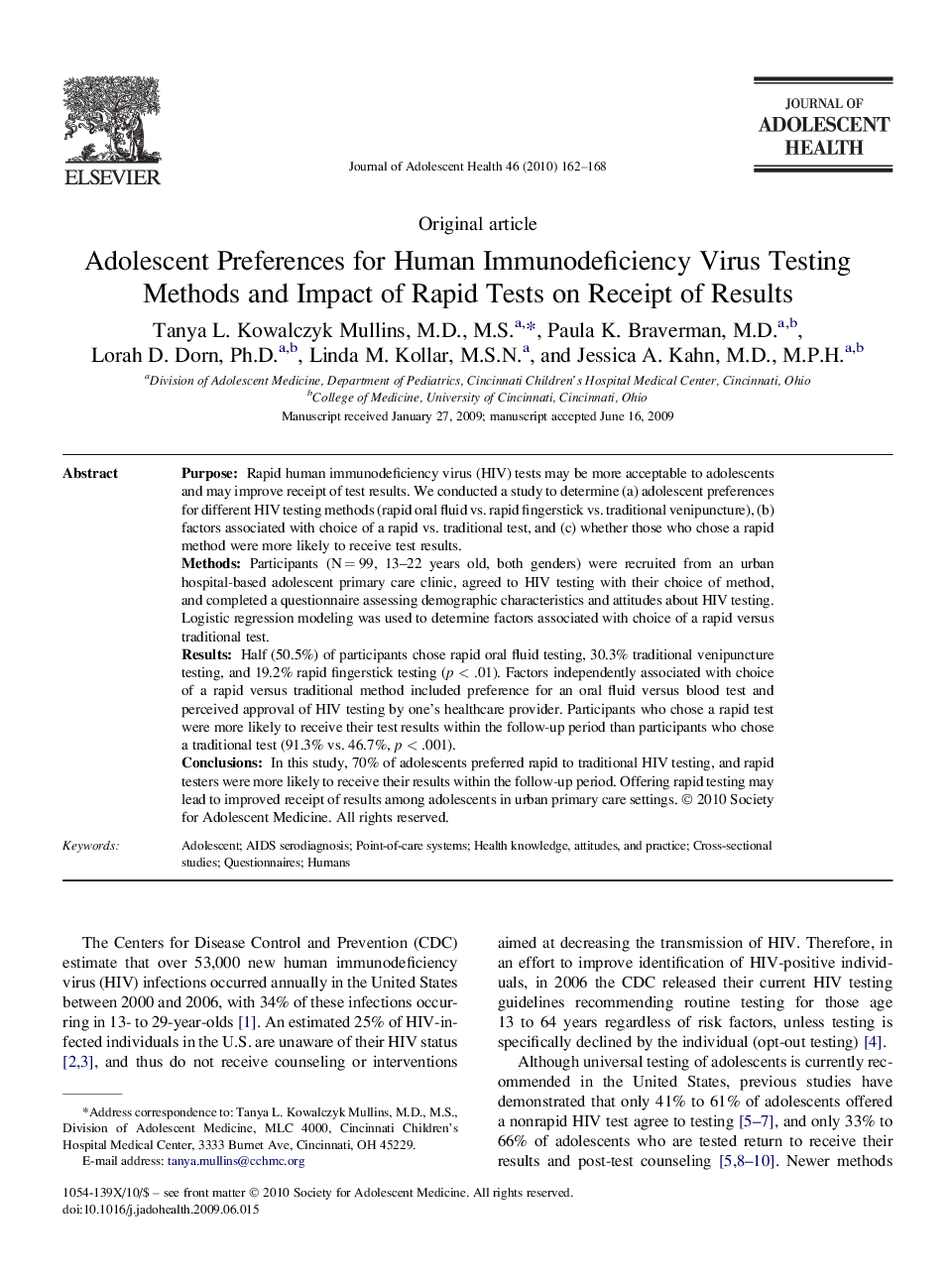| کد مقاله | کد نشریه | سال انتشار | مقاله انگلیسی | نسخه تمام متن |
|---|---|---|---|---|
| 1079252 | 950492 | 2010 | 7 صفحه PDF | دانلود رایگان |

PurposeRapid human immunodeficiency virus (HIV) tests may be more acceptable to adolescents and may improve receipt of test results. We conducted a study to determine (a) adolescent preferences for different HIV testing methods (rapid oral fluid vs. rapid fingerstick vs. traditional venipuncture), (b) factors associated with choice of a rapid vs. traditional test, and (c) whether those who chose a rapid method were more likely to receive test results.MethodsParticipants (N = 99, 13–22 years old, both genders) were recruited from an urban hospital-based adolescent primary care clinic, agreed to HIV testing with their choice of method, and completed a questionnaire assessing demographic characteristics and attitudes about HIV testing. Logistic regression modeling was used to determine factors associated with choice of a rapid versus traditional test.ResultsHalf (50.5%) of participants chose rapid oral fluid testing, 30.3% traditional venipuncture testing, and 19.2% rapid fingerstick testing (p < .01). Factors independently associated with choice of a rapid versus traditional method included preference for an oral fluid versus blood test and perceived approval of HIV testing by one's healthcare provider. Participants who chose a rapid test were more likely to receive their test results within the follow-up period than participants who chose a traditional test (91.3% vs. 46.7%, p < .001).ConclusionsIn this study, 70% of adolescents preferred rapid to traditional HIV testing, and rapid testers were more likely to receive their results within the follow-up period. Offering rapid testing may lead to improved receipt of results among adolescents in urban primary care settings.
Journal: Journal of Adolescent Health - Volume 46, Issue 2, February 2010, Pages 162–168